The Great Depression & WW II
Everyday Lives
No fighting ever took place on the American mainland. Even so, war was the focal point of almost every activity in the United States.
Most Americans firmly supported the war after the attack on Pearl Harbor. The government still wanted to promote feelings of national unity—that all Americans were fighting together whether at home or aboard. This would make it easier to ask Americans to sacrifice for the war effort.
The Office of Civilian Defense was created in 1942. They asked all Americans at home to contribute an hour a day for the war effort. This might take the form of training as an air warden, growing a Victory Garden, serving as extra police or firefighters, volunteering at the Red Cross to donate blood or wrap bandages, or taking part in a scrap drive.
Part of the responsibility of local civil defense units was to protect against air raids and sabotage. They would hold air raid and black out (turning all the lights off in the city) drills. They assembled and trained volunteer police and fire personnel, as well as medical teams.
Women who did not go to work in factories and businesses were encouraged to volunteer for the war effort. They rolled bandages for the Red Cross, joined military mothers’ clubs, volunteered at the local USO, and knitted wool socks for soldiers.
President Franklin Roosevelt’s administration enlisted media help to arouse patriotic feelings in the public. Radio programs were sponsored by the U.S. government to promote the sale of war bonds. Motion picture companies were encouraged to make films that improved morale.
Every week, Americans would go to the movies and first see a newsreel (like a television newscast today) about the war. Sometimes they would see a cartoon, often with the main character, like Bugs Bunny, fighting characters that represented the Axis enemies. Many of the films produced were about the war. They focused on patriotism, group effort, and the values of individual sacrifices.
Businesses were also encouraged to use the war in their advertising. An ad for Chesterfield cigarettes told viewers that the cigarettes were mild and tasted good, and used a photograph of two Marines smoking. A Mobilgas ad showed five children getting out of a car and suggested “doubling up” as “more moms add more riders…to make their cars last.”
Picture Credits:
- Two women wait for the Greyhound bus in Chattanooga in 1943. They told the photographer they had come to the city to do Christmas shopping for their sons overseas. Photograph by Esther Bubley, Library of Congress
- A woman at the Travelers' Aid desk at the bus terminal in Memphis help several soldiers and a sailor who want to find hotel rooms in the city. Photograph was taken by Esther Bubley in 1943. Office of War Information transferred to the Library of Congress
- Going to the movies was a favorite pastime during the war. Here two young women stand outside the Webbs Theater in Harriman, Tennessee, in July 1942. Tennessee State Library and Archives
- Two men put on a jiu-jitsu demonstration during a war bond rally on the Murfreesboro Public Square in August 1943. The Middle Tennessee State College Training Detachment hosted the event for the public. Notice the men in uniforms watching. Albert Gore Sr. Research Center Collection, Middle Tennessee State University, Volunteer Voices, Digital Library, University of Tennessee at Knoxville
- Life went on for these young women in college who were members of the women's volleyball intramural team at Middle Tennessee State Teachers College in 1942. Albert Gore Sr. Research Center Collection, Middle Tennessee State University, Volunteer Voices, Digital Library, University of Tennessee at Knoxville
- A photograph of new recruits dancing with local Nashville women at the YMCA in 1942. According to the newspaper file, these men had just arrived at the Army Air Force Classification Center. Often community groups would sponsor dances for the troops stationed nearby and invite area women to come and dance with the men. Photo by Campbell Bligh, courtesy of The Tennessean
The Great Depression & WW II >> World War II >> Life on the Homefront >> Everyday Lives
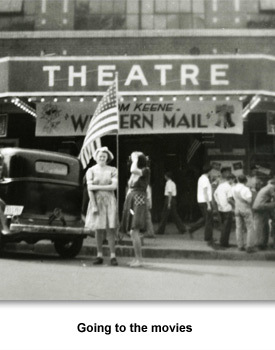
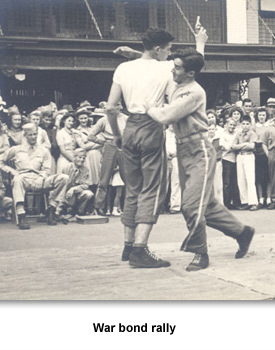
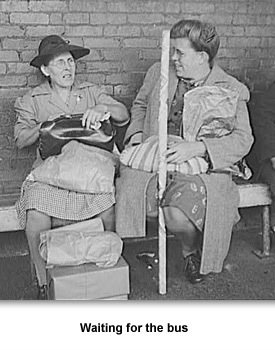
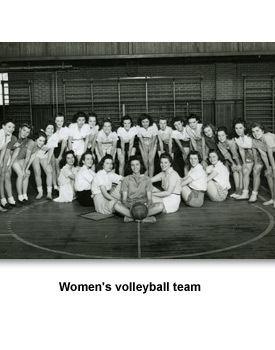
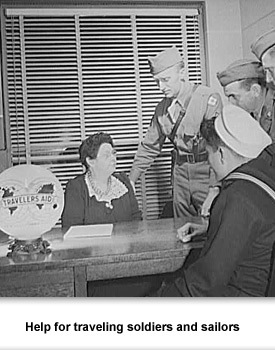
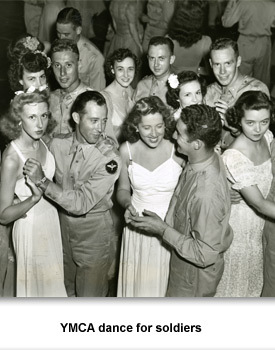
 Sponsored by: National Endowment for the Humanities
Sponsored by: National Endowment for the Humanities